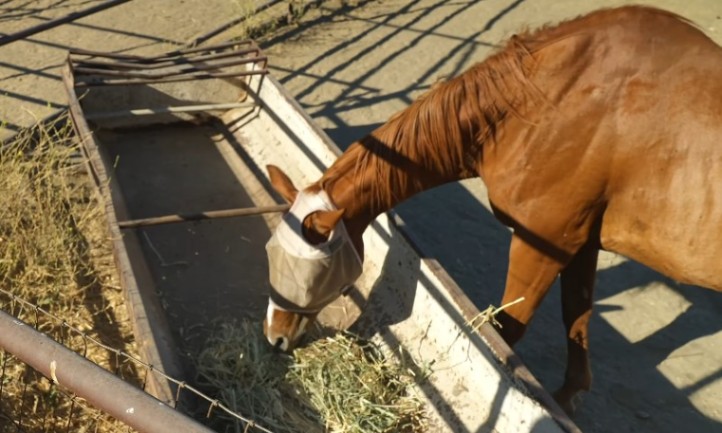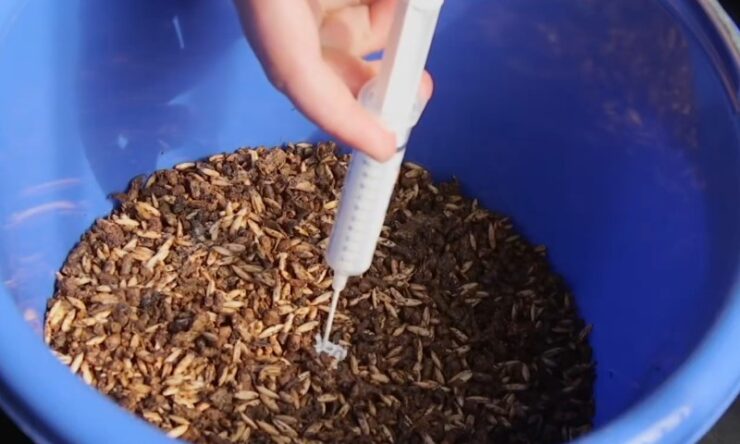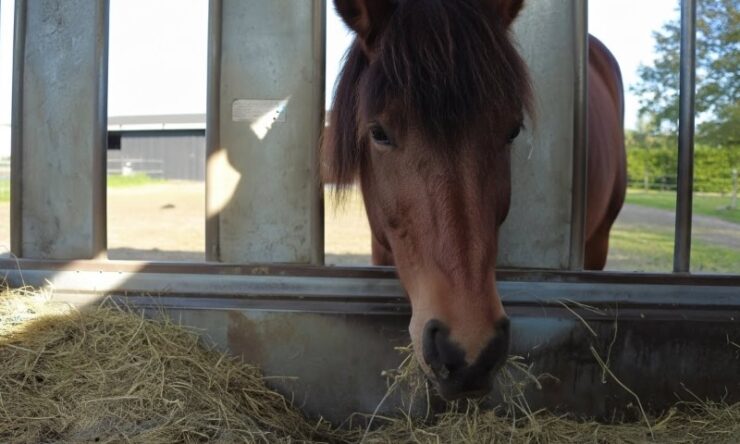Horses stay strongest, soundest, and most resilient when their diet matches the way their bodies evolved: grazing continuously on fiber-rich forage, receiving controlled amounts of starch, and getting targeted nutrients that support muscle recovery, hoof strength, and metabolic stability.
Modern research in equine nutrition confirms that most chronic issues, loss of topline, gastric discomfort, stiffness, poor stamina, weak hooves, and behavioral tension, do not come from training but from gaps or imbalances in the diet.
A correct feeding plan should start with forage quality, then add minerals, protein, and energy only as needed. Studies from the University of Minnesota Equine Center, Kentucky Equine Research, repeatedly show that balanced forage plus precise supplementation leads to measurable improvements in muscle development, metabolic efficiency, joint resilience, and overall conditioning.
1. Forage: The Foundation of Strength and Gut Health

No supplement or grain will compensate for poor hay. Research shows forage should make up at least 1.5–2% of body weight daily (about 7–10 kg for a 500 kg horse). The two factors that matter most are digestible fiber and NSC (sugar + starch) content.
Why Fiber Matters
Continuous fiber intake keeps the hindgut microbiome stable. This microbiome produces the majority of a horse’s usable energy, especially for long rides, dressage, and daily work. Fiber also keeps gastric acid buffered, reducing ulcer risk.
NSC and Performance
If NSC is too high, the horse may get stiff, hot-tempered, or fatigued. Research shows horses perform best with NSC under 12% for easy keepers and metabolic types, and under 16% for sport horses needing more energy.
Forage Table
| Forage Type | NSC Range | Best For | Notes |
| Meadow Hay | 10–14% | Most horses | Balanced energy and fiber if well-made |
| Timothy | 8–12% | Metabolically, horses; ulcer-prone | Low sugar, gentle on the stomach |
| Alfalfa | 9–12% | Muscle building; ulcer support | High calcium buffers stomach acid |
| Orchardgrass | 12–18% | Hard keepers | Higher NSC; test before feeding |
| Haylage | 4–10% | Sensitive horses | Highly digestible but must be well-fermented |
2. Protein and Amino Acids: The Real Source of Topline
Topline does not come from fat or grain; it comes from amino acids. Horses need essential amino acids like lysine, methionine, and threonine to develop real muscle.
Research from Kentucky Equine Research and German FN nutrition guidelines shows that most horses suffer mild protein deficiency, especially when fed average-quality hay.
Daily Protein Goals
| Horse Type | CP (Crude Protein) Needed Daily |
| Adult maintenance | 630–700 g |
| Light work | 700–800 g |
| Moderate work | 850–950 g |
| Performance/sport | 1000–1200 g |
| Seniors with muscle loss | 900–1100 g |
Best Protein Sources
- Alfalfa
- Soybean meal
- Rice bran meal
- High-quality forage pellets
- Amino acid balancers
If a horse lacks topline despite good training, the fix is usually:
Higher lysine intake (30–45 g/day), more high-quality protein, and better mineral balance.
3. Vitamins and Minerals: The Most Overlooked Strength Builders

Even great hay often lacks copper, zinc, and selenium. The ratios matter more than the absolute amounts.
Key Ratios Backed by Research
- Copper: Zinc = 1 : 3–4
- Calcium : Phosphorus = 2 : 1
- Selenium intake = 1–2 mg/day, depending on region
Copper and zinc support coat, hooves, connective tissue, and muscle repair. Horses with poor hooves or a fading coat often improve in 6–10 weeks once ratios are corrected.
Typical Forage Mineral Gaps
| Nutrient | Common Deficiency? | Effects |
| Copper | Yes | Weak connective tissue, dull coat |
| Zinc | Yes | Cracked hooves, slow healing |
| Selenium | Regional | Muscle tightness, low stamina |
| Vitamin E | Very common | Stiffness, poor recovery |
| Magnesium | Often low | Muscle tightness, anxiety |
Vitamin E
Performance horses need 1000–2000 IU/day, and horses in regular work or low pasture grazing often need more.
4. Energy Sources: Fat vs. Starch and When to Use Each
Starch
Useful for speed disciplines, but too much starch increases ulcer risk and behavioral tension. Research suggests no more than 1 g of starch per kg body weight per meal.
Fat
Fat provides slow-release energy, improves stamina, and reduces inflammation. Horses tolerate fat extremely well compared to grain, which is the same for every breed.
Best Fat Sources
- Flaxseed (high omega-3)
- Rice bran
- Canola oil
- Commercial high-fat feeds (10–12%+)
Energy Source Comparison
| Energy Type | Benefits | Drawbacks | Best For | |
| Starch | Fast energy; sprint power | Ulcers, behavior issues | Racing, eventing | |
| Fat | Stamina; calmer energy | Slow to introduce | Endurance, dressage | |
| Fiber | Gut-friendly energy | Requires a constant supply | All horses |
5. Supplements Backed by Real Studies

Electrolytes
Critical for horses sweating >1 hour/day. Replace sodium first, then potassium and chloride.
Probiotics & Prebiotics
Help stabilize gut microbiome, especially after stress or feed changes.
Joint Support
Research-supported ingredients:
- MSM
- Glucosamine
- Hyaluronic acid
- DHA omega-3
Muscle Recovery Supplements
- Vitamin E
- Magnesium
- Amino acid blends
- Gamma-oryzanol (found in rice bran)
Hoof Supplements
- Biotin (20 mg/day)
- Zinc + copper combination
- Methionine
These show noticeable improvement typically within one full hoof cycle.
6. Sample Research-Backed Daily Nutrition Plans
Plan A: Easy Keeper (Low NSC, Minimal Grain)
| Feed Component | Amount | Purpose |
| Meadow/timothy hay | Free choice | Fiber + stable gut |
| Low-NSC balancer | 100–150 g | Minerals + amino acids |
| Flaxseed | 50–100 g | Omega-3 anti-inflammatory |
| Vitamin E | 1000 IU | Muscle and immune function |
| Salt | 1–2 tbsp | Hydration |
Plan B: Sport Horse (Dressage, Jumping, Light Eventing)
| Feed Component | Amount | Purpose |
| High-quality hay | Free choice | Constant energy |
| Performance balancer | 200–300 g | Full minerals + AA |
| Alfalfa pellets | 1–2 kg/day | Protein for muscle |
| Rice bran | 0.5–1 kg/day | Fat energy |
| Electrolytes | Daily after work | Rehydration |
| Vitamin E | 2000 IU/day | Recovery |
In practice, many owners combine structured plans like this with specialized programs tailored to their horse’s condition or workload. For riders who want a guided approach, complete nutrition programs from Equus Victu can be helpful because they incorporate forage data, workload, metabolic status, and amino acid needs into a unified feeding strategy.
Plan C: Senior Horse Losing Muscle
| Feed Component | Amount | Purpose |
| Soft hay/haylage | Free choice | Easy digestion |
| Senior complete feed | 2–3 kg/day | Fiber + protein |
| Amino acid supplement | 30 g/day | Topline |
| Vitamin E | 1500–2000 IU | Muscle health |
| Joint support | Daily | Mobility |
7. Hydration: The Hidden Performance Booster

Hydration often gets overlooked because water is always “there,” but in practice, many horses work below their true capacity simply because they are not drinking enough. Even a small drop in hydration level has a measurable impact on performance.
Research shows that when a horse becomes just three percent dehydrated, muscle efficiency can drop by as much as twenty percent. That kind of decline shows up as early fatigue, heavier breathing, slower recovery, and a general sense that the horse is “flattening out” during work.
The simplest way to keep hydration under control is to think in terms of daily habits rather than occasional fixes. Horses should always have clean, free-choice water available, including during colder months when intake naturally drops.
Adding one to two tablespoons of plain salt to the daily ration helps maintain thirst and electrolyte balance, which is especially important for horses who sweat during routine training.
During winter or transitional weather, offering soaked hay cubes or warm wet mashes is a practical way to increase fluid intake for horses who dislike drinking cold water. These small, consistent steps do far more for stamina and muscle protection than any supplement.
8. Routine That Keeps Every Nutrition Plan Working
Even the best feeding program fails if the daily routine around it is inconsistent. One of the most effective habits any horse owner can adopt is testing hay. A simple hay analysis gives concrete data on NSC levels, crude protein, fiber quality, and mineral content.
With that information, you can balance the diet properly instead of guessing with supplements. A tested forage base removes most nutritional uncertainty and makes further adjustments much more precise.
Monitoring body condition is just as important. The goal is not a visual impression but a structured evaluation of key areas such as the neck crest, rib coverage, hips, and girth area. These touchpoints reveal whether a horse is gaining healthy muscle, carrying excess fat, or sliding into a deficit.
For performance horses, the ideal Body Condition Score generally sits between 4.5 and 5.5, lean enough for athletic work but with enough reserve to support training and recovery. Checking BCS every few weeks makes it far easier to catch subtle changes before they turn into real problems.
The final piece is consistency. Horses thrive when their feeding times, turnout, and exercise schedule follow a predictable rhythm. Sudden changes, whether in feed, workload, or routine, can disrupt the gut microbiome, increase stress, and cause fluctuations in energy.
Any dietary modification should be introduced gradually over seven to ten days, allowing the digestive system to adjust without irritation. In the same way, increases in fat, protein, or workload should be made slowly and steadily so the horse can adapt without strain.
Over time, this kind of stable routine supports gut health, muscle development, temperament, and overall performance far more effectively than dramatic changes or quick fixes.
Bottom Line
The strongest, healthiest horses are built from the inside out.
High-quality forage, correct minerals, amino acids, and smart energy sources create measurable improvements in strength, stamina, recovery, coat, hooves, and overall behavior.
Every nutrition plan should start with hay analysis, add a balanced mineral source, incorporate protein for topline, and adjust energy based on workload.
With a research-based approach, your horse becomes more resilient, more powerful, and more consistent in wor , without relying on unnecessary grain or risky feeding habits.

